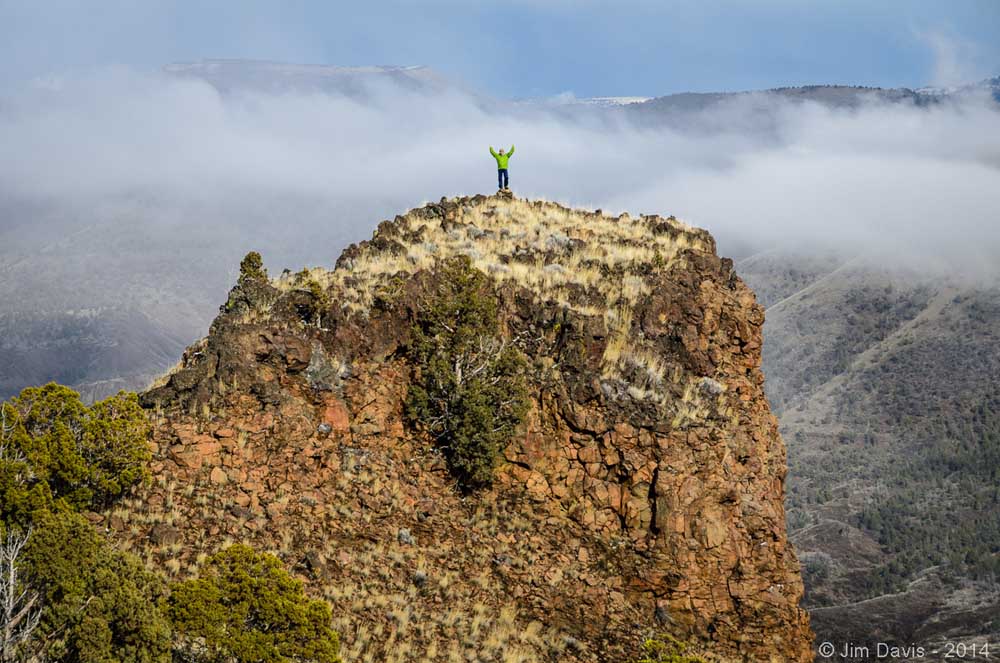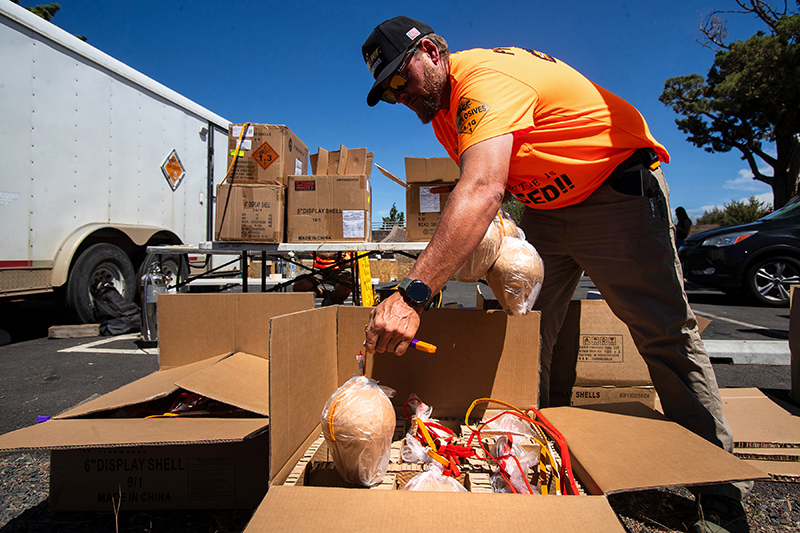Take in the stunning scenery of Sutton Mountain
Published 6:30 am Thursday, September 28, 2023

- A hiker celebrates atop Packsaddle Mountain in the Sutton Mountain Wilderness Study Area.
The Painted Hills Unit of the John Day Fossil Beds National Monument sees roughly 200,000 visitors per year, almost all of them dazzled by the brightly colored hillsides, arid landscapes, and explosive ecological history of the John Day River basin.
But just east of the Painted Hills sits Sutton Mountain, rising 4,694 feet above sea level and towering over the monument’s border. With a rocky western face and a grassier, more gradual eastern slope, Sutton Mountain invites hikers and horseback riders to rise above the basin for a top-down look unavailable almost anywhere else in the region.
Read on to explore the many ways to enjoy this underrated gem in Oregon’s High Desert.
Ascend to the summit
One of the most rewarding ways to enjoy Sutton Mountain would be to ascend it — which can be done by foot or horseback. But of course, getting to enjoy its views demands some effort along the Sutton Mountain Trail, a 7.5-mile round-trip trek that gains nearly 1,700 feet in elevation. The trail follows an old roadbed through juniper woodlands before leaving the shade for good. Roughly halfway up the mountain you’ll walk through a cattle gate — be sure to close it behind you — and follow the road as it grows fainter and approaches the summit. From the summit, you’ll have earned views of the Painted Hills, Ochoco Mountains and several Cascade peaks including Mount Jefferson and Mount Adams.
Spot wildlife on your way to a waterfall
Not only is it a peak, but Sutton Mountain is also a 29,000-acre wilderness study area managed by the Bureau of Land Management for primitive recreation, naturalness and opportunities to experience solitude. Nestled in the Sutton Mountain Wilderness Study Area, Black Canyon is a 3.1-mile round-trip, relatively flat trail through an outstanding canyon that leads to a waterfall. Along the way, you’ll not only spot waterfalls but you can be on the lookout for pronghorn, mule deer, bald eagles, hawks, pygmy rabbit and Western toad along your journey. Additionally, along with the sagebrush and juniper characteristic of the High Desert, Sutton Mountain provides vital habitat to the threatened arrowleaf thelypody and Peck’s milkvetch species.
Cool off in a swimming hole
There are many fantastic swimming holes on the John Day River, but none bring you closer to Sutton than Bridge Creek. Meandering between the Sutton Mountain WSA and the Painted Hills, Bridge Creek is a 28-mile long tributary of the John Day River. Conveniently featuring a campground, whether you decide to spend the night or not, the grounds provide access to a lovely swimming spot.
Discover painted geological formations
Many people trek to the Painted Hills Unit of the John Day Fossil Beds to see its brightly colored paleaosols (the exposed fossil soils buried within volcanic deposits), but few people know that Sutton Mountain also boasts an abundance of these painted formations. Formed by layers of ash, lava and volcanic mud trapping ancient plants and animals, inadvertently preserving them for millennia. Over time, erosion has revealed these ancient fossils and sediments, creating a beautiful geologic story dating back as far as 40 million years. To experience this marvel without the crowds, take a trip to the western slope of Sutton Mountain, or visit Stovepipe Springs.
Camp where the river meets the hills
Sitting on the edge of the Sutton Mountain Wilderness Study Area, a string of free campsites along a beautiful stretch of the John Day River make up the Priest Hole Recreation Site. A local favorite for swimming and fishing, visitors can also lounge or float in this calm and shallow section of river. Surrounded by juniper trees, with stunning views of Sutton Mountain and the Painted Hills, this isolated spot holds a handful of High Desert wonders — use it as your home base to explore the area.
If you reach the summit of Sutton Mountain, or explore one of the many other ways to see the wilderness study area, you’ll understand why advocates and organizations like Oregon Natural Desert Association have been striving for years to protect this stunning landscape. In 2021, Oregon Senators Jeff Merkley and Ron Wyden proposed to do so with the introduction of an act that would establish a new Sutton Mountain National Monument. Learn more about what you can do to elevate conservation across this area at onda.org.








